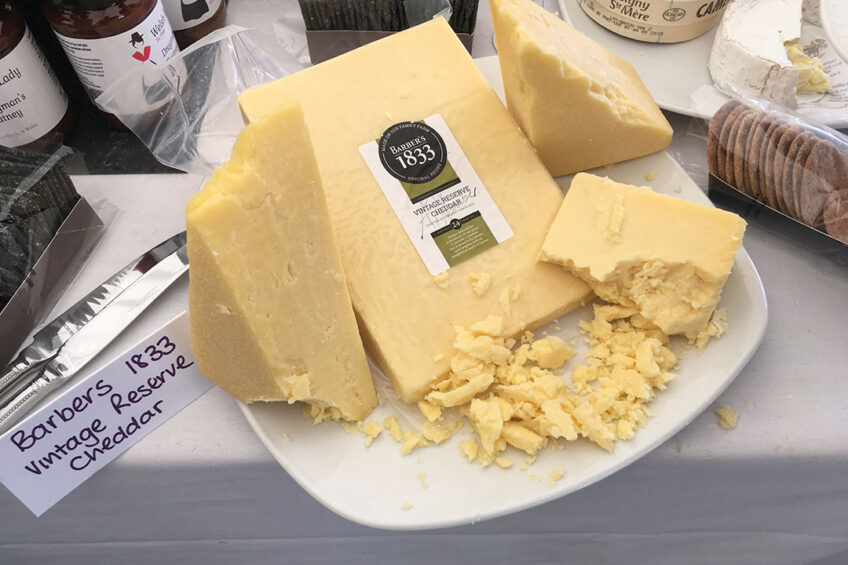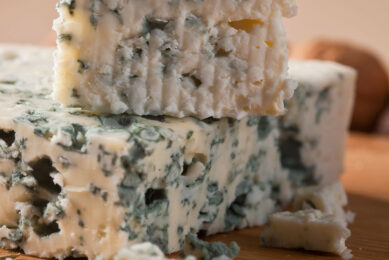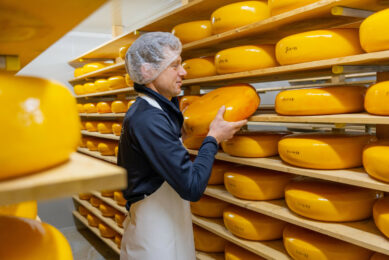CETA cheese quota allocation system under formal review

Cheese quotas under the Comprehensive Economic and Trade Agreement (CETA) are currently under review as Europe has raised concerns about where tariff rate between Canada and the European Union quotas (TRQ) are allocated and when they are used.
While allocation targets have so far been met in full, the EU complained that the rate of quota use is inconsistent and spikes come the end of the year. Canadian counterparts, including processors and producers, have concerns of their own.
Tariff Rate Quotas
Recently, Canada signed 3 major trade agreements that included Tariff Rate Quotas for cheese, CETA, the Trans-Pacific Partnership (TPP), and the United States–Mexico–Canada Agreement (USMCA).
“Under the World Trade Organization, there was a TRQ of about 20 million kg and that existed for 40 years and never grew by 1 kg, which illustrates that the policy of Canada is not to allow in any cheese imports,” explained James McIlroy. Mr McIlroy is an international lawyer who represents the International Cheese Council of Canada (ICCC), Canadian importers of cheese.
“But all that changed when Canada realised it had to diversify its trade, particularly when President Trump came to power, and so we started signing trade agreements,” he added.
Europe, however, is not happy with the way Canada has implemented its trade obligations under CETA, said Mr McIlroy.
While European Parliament approved the agreement over 2,5 years ago, it has been ratified only half of European member states have ratified it.
“This ratification process is not being helped because of European concerns that Canada is playing games and it’s not complying with its treaty obligations,” said Mr McIlroy.
“It’s pretty simple to see why they’re concerned,” he added.
On April 17, the European Union requested a formal review of Canada’s cheese TRQ allocation system.
In the meantime, cheese is entering the country, but slowly. By the end of August, only 25% of the expected 8 million kg of cheese allocation for fine cheese had entered the country.
“Last year they achieved a fill rate, but it all came in during the last few weeks,” said Mr McIlroy. “The Europeans are concerned that they’re not getting what they bargained for.”

Concerns from EU exporters
In particular, European cheese exporters are concerned that Canada gave the cheese TRQs to their competitors, not their customers. According to Mr McIlroy, 50% of TRQs went to Canadian cheese manufacturers “who’ve made it very clear they do not want to import European cheeses that compete with Canadian cheeses.”
The treaty, however, specifically requires that TRQs be allocated to those who are most likely to use them.
According to Sylvain Leclerc, spokesperson of Media Relations, Global Affairs Canada, Canada’s administration of the CETA cheese TRQs is in full compliance with its obligations under CETA.
“There is a review clause in CETA, which says that at the mid-term and at the end of the phase-in period of the TRQs, the Parties review the operation of the TRQ administration system for the EU’s TRQs for beef and veal and for pork and for Canada’s TRQs for cheese,” said Leclerc. “We have now reached the mid-term, and we are currently discussing the logistics related to the review.”
The Government of Canada has also formally invited the EU to participate in Canada’s comprehensive review of TRQ administration, which was launched on May 10, 2019. This review includes the administration of all of Canada’s TRQs for supply-managed commodities.
“The use of the all cheese TRQ, to date, is 71% higher than the usage rate of this TRQ at this time in 2018,” Mr Leclerc added. “This increased use is a positive sign of importers’ interest in using the TRQ.”
Although the use of the industrial cheese TRQ is slightly behind use in 2018, the Canadian Government anticipates that this will increase over the course of the remainder of the year.
Specialty cheese
But importers like Leeola Zanetti, Senior Director of Marketing, Specialty & Fresh, argue that TRQs have been allocated to those who won’t use them. Her company represents several European specialty cheese companies that imports, sells, markets and distributes cheese across the country.
“Ottawa has allocated most of the CETA Cheese Tariff Rate Quotas to persons who do not necessarily want to or know how to import, distribute, and market specialty cheese,” she said. “This has resulted in a significant amount of product being imported into Canada all at once late in 2018.”
The late fulfilment of TRQs disrupted their ability to predict needs.
“We have seen spoils rise,” she said. “It is unfortunate as food waste is a huge concern globally.”
Canada’s dairy producers and processors have also seen disruption, particularly when the bulk of imports arrive at the end of the year.
“When the Canadian market is faced with a huge import of cheese that has an impact on our impact on our producers and the way that we manage our market,” said Marie Ly, Director of Policy and International Trade for the Dairy Farmers of Canada. “That was very disrupting.”
The rationale behind agreeing to cheese TRQs under CETA, she said, was to provide Canadian consumers with more choice, but after 2 years she says they haven’t seen any benefits for consumers.
“We haven’t seen a price decrease at the retail level for cheese and, secondly, we haven’t noticed any different cheese coming into Canada,” said Ly. “Basically, what we were afraid of was just realised, meaning that the imports of cheese are the same kinds of cheese that we are already producing here in Canada, and that’s direct competition with the products we have here.”
Mathieu Frigon, President and CEO of the Dairy Processors Association of Canada (DPAC), however, echoed concerns about market displacement.
“Since it takes approximately 10 litres of raw milk to make 1 kg of cheese, and CETA access is approximately 18 million kg of cheese, the impact on both Canadian farmers and dairy processors is clear,” he said.
Lost sales
In fact, DPAC estimates that duty-free European cheese imports will result in approximately $150 million in lost sales annually for Canadian cheese processors.
There is, however, demand for fine cheese, which is typically very strong at the end of the year just before Christmas, he said. Imports coincide with a dip in production levels in Canada, as farmers enter their slow season.
“It therefore makes commercial sense for imports of fine European cheese to be higher late in the calendar year,” said Mr Frignon. “This is a win-win for the European exporter and the Canadian importer: the exporter gets access to a better price and the importer gets access to volume that may not be available on the domestic market.”
Addressing complaints that CETA cheese TRQs have been allocated to parties who have no intention of using them, Mr Frignon argued that Canadian dairy processors have a long history as importers.
DPAC has consistently advocated for the allocation of TRQs to dairy processors, as they believe their technical knowledge and expertise allows them to import what the Canadian market needs.
Brexit
Further disruptions are expected as UK cheese exporters prepare for a no-deal Brexit. Simon O’Brien, Marketing Manager of UK cheese producer Barber’s 1833, expressed how pleased he was that the company’s importer finally gained access to the Canadian market through CETA. Their first shipment of Wookey Hole Cave-Aged Farmhouse Cheddar hit Loblaws’ shelves on 4 October. With a Brexit deadline of 31 October fast approaching, though, he’s worried access will be short lived. He expressed hope that Britain and Canada would be able to reach an agreement of their own, one with dairy market access.
Dairy Farmers of Canada Director of Policy and International Trade Marie Ly says that’s not likely, though.
“We don’t want to give additional access to Britain,” she said.
Join 13,000+ subscribers
Subscribe to our newsletter to stay updated about all the need-to-know content in the dairy sector, two times a week.










